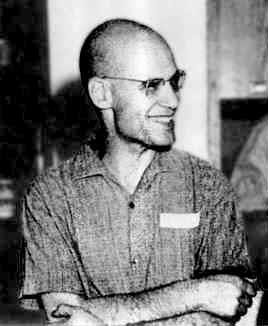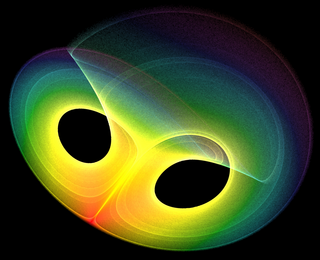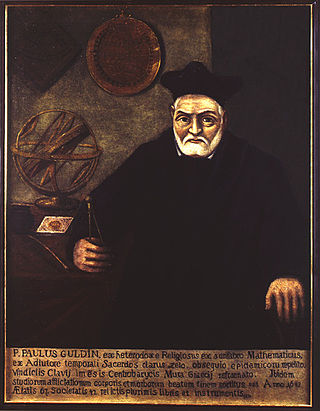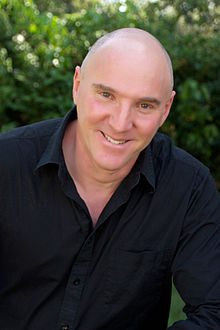
Alexander Grothendieck was a German-born mathematician who became the leading figure in the creation of modern algebraic geometry. His research extended the scope of the field and added elements of commutative algebra,homological algebra,sheaf theory,and category theory to its foundations,while his so-called "relative" perspective led to revolutionary advances in many areas of pure mathematics. He is considered by many to be the greatest mathematician of the twentieth century.
Calculus is the mathematical study of continuous change,in the same way that geometry is the study of shape,and algebra is the study of generalizations of arithmetic operations.

Differential geometry is a mathematical discipline that studies the geometry of smooth shapes and smooth spaces,otherwise known as smooth manifolds. It uses the techniques of differential calculus,integral calculus,linear algebra and multilinear algebra. The field has its origins in the study of spherical geometry as far back as antiquity. It also relates to astronomy,the geodesy of the Earth,and later the study of hyperbolic geometry by Lobachevsky. The simplest examples of smooth spaces are the plane and space curves and surfaces in the three-dimensional Euclidean space,and the study of these shapes formed the basis for development of modern differential geometry during the 18th and 19th centuries.

Analysis is the branch of mathematics dealing with continuous functions,limits,and related theories,such as differentiation,integration,measure,infinite sequences,series,and analytic functions.

In mathematics,an infinitesimal number is a non-zero quantity that is closer to 0 than any non-zero real number is. The word infinitesimal comes from a 17th-century Modern Latin coinage infinitesimus,which originally referred to the "infinity-eth" item in a sequence.
Foundations of mathematics is the logical and mathematical framework that allows the development of mathematics without generating self-contradictory theories,and,in particular,to have reliable concepts of theorems,proofs,algorithms,etc. This may also include the philosophical study of the relation of this framework with reality.

Paul Guldin was a Swiss Jesuit mathematician and astronomer. He discovered the Guldinus theorem to determine the surface and the volume of a solid of revolution. Guldin was noted for his association with the German mathematician and astronomer Johannes Kepler. Guldin composed a critique of Cavalieri's method of Indivisibles.

Bonaventura Francesco Cavalieri was an Italian mathematician and a Jesuate. He is known for his work on the problems of optics and motion,work on indivisibles,the precursors of infinitesimal calculus,and the introduction of logarithms to Italy. Cavalieri's principle in geometry partially anticipated integral calculus.
Calculus,originally called infinitesimal calculus,is a mathematical discipline focused on limits,continuity,derivatives,integrals,and infinite series. Many elements of calculus appeared in ancient Greece,then in China and the Middle East,and still later again in medieval Europe and in India. Infinitesimal calculus was developed in the late 17th century by Isaac Newton and Gottfried Wilhelm Leibniz independently of each other. An argument over priority led to the Leibniz–Newton calculus controversy which continued until the death of Leibniz in 1716. The development of calculus and its uses within the sciences have continued to the present.
The Nature of Order:An Essay on the Art of Building and the Nature of the Universe (ISBN 0-9726529-0-6) is a four-volume work by the architect Christopher Alexander published in 2002–2004. In his earlier work,Alexander attempted to formulate the principles that lead to a good built environment as patterns,or recurring design solutions. However,he came to believe that patterns themselves are not enough to generate life in buildings and cities,and that one needs a "morphogenetic" understanding of the formation of the built environment as well as a deep understanding of how the makers get in touch with the creative process.

AndréTacquet was a Brabantian mathematician and Jesuit priest. Tacquet adhered to the methods of the geometry of Euclid and the philosophy of Aristotle and opposed the method of indivisibles.

The Assayer is a book by Galileo Galilei,published in Rome in October 1623. It is generally considered to be one of the pioneering works of the scientific method,first broaching the idea that the book of nature is to be read with mathematical tools rather than those of scholastic philosophy,as generally held at the time.
In the mathematics of Lie theory,Lie's third theorem states that every finite-dimensional Lie algebra over the real numbers is associated to a Lie group . The theorem is part of the Lie group–Lie algebra correspondence.
This is a timeline of mathematicians in ancient Greece.

Infinity is something which is boundless,endless,or larger than any natural number. It is often denoted by the infinity symbol .

In geometry,Cavalieri's principle,a modern implementation of the method of indivisibles,named after Bonaventura Cavalieri,is as follows:

Jeremy John Gray is an English mathematician primarily interested in the history of mathematics.
Roshdi Rashed,born in Cairo in 1936,is a mathematician,philosopher and historian of science,whose work focuses largely on mathematics and physics of the medieval Arab world. His work explores and illuminates the unrecognized Arab scientific tradition,being one of the first historians to study in detail the ancient and medieval texts,their journey through the Eastern schools and courses,their immense contributions to Western science,particularly in regarding the development of algebra and the first formalization of physics.

Horologium Oscillatorium:Sive de Motu Pendulorum ad Horologia Aptato Demonstrationes Geometricae is a book published by Dutch mathematician and physicist Christiaan Huygens in 1673 and his major work on pendula and horology. It is regarded as one of the three most important works on mechanics in the 17th century,the other two being Galileo’s Discourses and Mathematical Demonstrations Relating to Two New Sciences (1638) and Newton’s PhilosophiæNaturalis Principia Mathematica (1687).

Stefano degli Angeli was an Italian mathematician,philosopher,and Jesuate.












